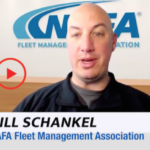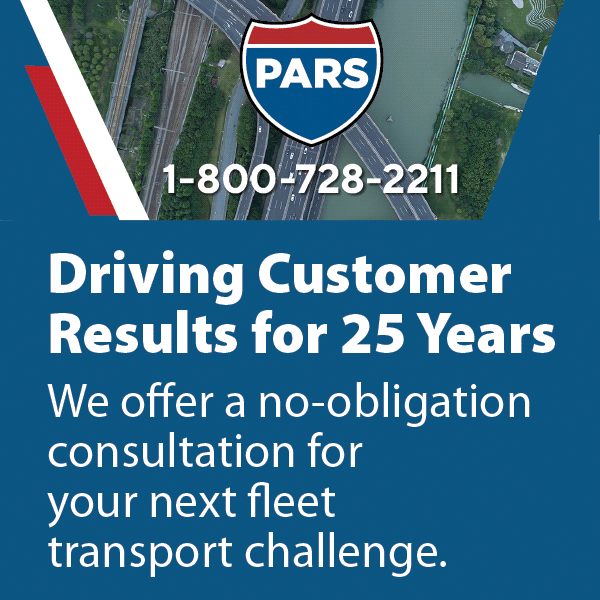ChargePoint Releases an Enhanced Integrated Charging Experience for Fleets En-Route and At Home
ChargePoint announced enhancements to its software offering which enables electric and mixed fuel fleets to find, use, and pay for charging from a single application, including seamless driver reimbursement when they charge their company EV at home.
“We continue to bring to market new, innovative solutions that enable a frictionless charging experience for EV drivers and fleet operators alike,” said Rich Mohr, SVP, Americas at ChargePoint. “We are committed to enabling an unmatched driver experience with solutions such as home charging reimbursement, while also giving our customers optimal fleet management tools to minimize total cost of ownership.”
NAFA’s Inaugural Ride & Drive Experience Makes Waves at I&E
Hundreds of fleet professionals gathered at NAFA's annual Institute & Expo (I&E) in San Antonio this afternoon to participate in the inaugural Ride & Drive Experience, powered by Bobit. This immersive event provided I&E attendees with a unique opportunity to interact firsthand with the latest models, electric vehicles and alternative fuel options from leading automotive manufacturers.
"We are thrilled with the success of the inaugural Ride & Drive Experience at I&E 2024," said Bill Schankel, CAE, CEO of NAFA. "This event provided a dynamic platform for fleet professionals to engage with the latest automotive technologies and experience the vehicles driving our industry forward."
Getting By with a Little Help from Your Co-Pilot: Staying Safe on Busy Roads
To assist with safety and distraction concerns, Danish Tech scale-up, OOONO, says it is committed to creating a safer everyday life for drivers.
It recently unveiled two models of their flagship product; OOONO CO-DRIVER. Taking the form of a small button which is fitted inside a driver’s vehicle, the technology warns drivers of upcoming speed cameras, congestions, and road hazards.
The two models vary slightly depending on user preference with CO-DRIVER NO1 provides a simple solution with audio-visual warnings, while CO-DRIVER NO2 enhances the experience with advanced features, including in-app navigation and compatibility with Apple CarPlay and Android Auto.
At NAFA 2024, Fleets Are Finding the Ways That Work on Their Electrification Journey
image credit:EDF
This week, Environmental Defense Fund (EDF) witnessed the hardworking spirit of the fleet industry at the NAFA Fleet Management Association’s Institute and Expo. We saw a level of engagement from fleets and other attendees that showed how the fleet industry is evolving.
Fleets are now taking on the additional responsibility as stewards of sustainability projects, which was reflected in the event programming — more than a quarter of the 40-plus educational sessions were focused on sustainability, zero-emission vehicles and electrification.
NAFA invited EDF to present at the conference and speak to attendees about advancing electrification in municipal fleets and the benefits of transition planning.
Read on for EDF's top take-aways from NAFA 2024 for your fleet.
NAFA Names the 2024 100 Best Fleets in the Americas at its Annual Institute & Expo
Today NAFA Fleet Management Association (NAFA) announced the 100 Best Fleets in the Americas for 2024. NAFA’s 100 Best Fleets in the Americas program recognizes peak-performing public and commercial fleet operations, as well as the Fleet Professional and Fleet Technician of the Year. The winners were announced this morning during NAFA’s annual Institute & Expo (I&E) in San Antonio.
“The 100 Best Fleets contest plays such an integral role in the NAFA community,” says Mike Camnetar, CAFM, NAFA Board President. “These awards showcase the outstanding achievements and leadership within our industry. We commend these fleets and individuals for their dedication to excellence and innovation, and we look forward to seeing what they accomplish in 2024.”
Recent Posts
- ChargePoint Releases an Enhanced Integrated Charging Experience for Fleets En-Route and At Home
- NAFA’s Inaugural Ride & Drive Experience Makes Waves at I&E
- Getting By with a Little Help from Your Co-Pilot: Staying Safe on Busy Roads
- At NAFA 2024, Fleets Are Finding the Ways That Work on Their Electrification Journey
- NAFA Names the 2024 100 Best Fleets in the Americas at its Annual Institute & Expo
- Business Flexibility & Use Of Sophisticated Data: Reshaping Fleet Operations In 2024
- NAFA’s 2024 I&E Media Day Unveils Cutting-Edge Fleet Innovations & Insights
- Navigating the Switch from Gas to Electric Utility Vehicle (EUV) Fleets
- Open Source Safety? Elektrobit Proves Future Cars Can Be Coded More Like Video Games
- Strategic Planning for Growing Your Business’s Fleet Utilizing Historical Data


























